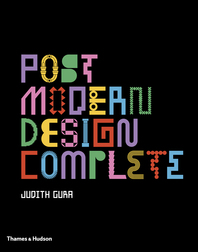Denise Scott Brown did not pull any punches during two public appearances last week at the Harvard Graduate School of Design, where she staunchly defended her contributions—both built and theoretical—to the architecture and planning professions over the course of a prolific career spanning more than half a century. “The sexism I discovered rose to exponential heights when Bob [Venturi] and I married,” Scott Brown, recalling the early critics who accused her of leeching off her husband, told a largely female audience at a panel discussion on Wednesday. “I had the usual, run-of-the-mill horror stories, and then all these extra ones.”
These appearances, which included a two-hour lecture in a packed auditorium Tuesday evening, were two of Scott Brown’s more high-profile public responses since two Harvard students launched a petition seven months ago calling for retroactive acknowledgement of her contributions to the 1991 Pritzker Prize, which was solely awarded to her collaborator and husband, Robert Venturi. (The petition, which has 18,455 signatures to date, went viral and garnered national media attention. Nine Pritzker Prize winners have signed, including Zaha Hadid, Rem Koolhaas, and Venturi, who wrote, “Denise Scott Brown is my inspiring and equal partner.”)
Scott Brown began her lecture by saying that the petition had remedied a decades-old slight—the architect has never been shy about expressing her desire to be acknowledged. “Thank you for what Women in Design has done to make my old age happy,” she said, referring to the student group that launched the petition and sponsored the lecture. “With the petition, who needs the Pritzker? That’s my prize, that’s my reward.”
She dedicated the remainder of her talk to a discussion of Venturi, Scott Brown and Associates’ most celebrated and sometimes controversial work—and the theory behind the projects that made the firm famous. She argued that even the firm’s institutional and civic projects have a populist bent, exploring how people interact with their environments and each other, from a campus plan for the University of Michigan to a 760,000-square-foot civic complex with a central boulevard in Toulouse, France. “We architects have been criticized, rightly, by sociologists who say, ‘You design spaces that people don’t use,’” said Scott Brown. “But I say, ‘Here are spaces I’ve designed, and they’re full of people.’”
Scott Brown titled the lecture “Mayhew’s Architecture,” recalling journalist Henry Mayhew’s groundbreaking and meticulous documentation of London’s poor and working class neighborhoods in the 1840s. It’s a loaded title that invokes the populist spirit of the petition as well as her exhaustive documentation (through photographs and maps) of cities, and most famously, Las Vegas and its seemingly low-brow architecture—car dealerships, casinos, motels, and gas stations. “I take something, and then I later find out why I took it, and that helps my interest to grow,” Scott Brown said of her obsession with photography, which dates back to her teenage years as a student in South Africa. (She is currently compiling a book of her photographs, culled from approximately 10,000 slides documenting her travels around the world.) She also explained the thinking behind two of her most famous photographs: In the first, she stands with hands on her hips in the Las Vegas desert; In the second, Venturi, wearing a black suit and with his back to the camera, poses in roughly the same spot. “I was hamming,” she said. “I’m thinking of Magritte and I’m thinking of scale plays. That’s the chimney of a house that burned, and then here’s a 22-story building—the sign almost the size of the building—and there’s Bob. Why he was wearing a black suit, God only knows.”
Speaking Wednesday on old-fashioned stereotypes about creativity and collaboration in architecture, Scott Brown sarcastically quipped, “You can’t have a genius in two heads. Genius belongs in a man.”
Click through the slide show to view a selection of Scott Brown’s projects and photographs in Philadelphia, Las Vegas, and elsewhere.
Video courtesy Harvard Graduate School of Design.
















Post a comment to this article
Report Abusive Comment